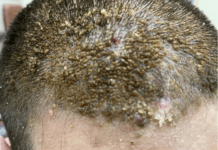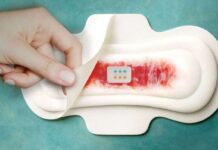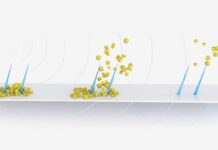A study published in Science Translational Medicine suggests that messenger RNA (mRNA) can help to correct argininosuccinic aciduria. It is a rare liver genetic disease.
A hereditary metabolic disease called argininosuccinic aciduria alters how the body breaks down protein, which may result in elevated blood ammonia levels. It has been discovered that those afflicted by the illness also have an imbalance in the control of glutathione, which is crucial for liver detoxification. It affects about one newborn out of every 100,000.
The team kept testing the therapy on humans in the following years. Global clinical studies by Moderna are studying the use of mRNA therapies in other rare inherited metabolic illnesses, such as propionic and methylmalonic acidemias.
What is messenger RNA?
Messenger RNA (mRNA) is a molecule that contains instructions for cells to produce proteins. Scientists were able to infuse the medication into mice intravenously. The medication targets their liver cells by protecting the mRNA in a microdroplet of lipids.
Co-lead Principal Investigator, Dr. Julien Baruteau (UCL Great Ormond Street Institute of Child Health), said,
Messenger RNA has revolutionized the field of vaccines during the COVID-19 pandemic. We believe it can now do the same for rare diseases
Less than 5% of these illnesses have authorized treatments, though. To treat the disease, most of these treatments involve gene therapy to replace the malfunctioning gene with a healthy one.
Gene therapy used altered viruses until recently to transfer the therapeutic gene to the disease-causing cells. These viral systems, however, cannot be widely used because they can have serious negative effects, such as immune system reactions in the patient.
Researchers conducted a trial on mice using mRNA treatments and positron emission tomography scans to track the correction of glutathione regulation. The team conducted the trial weekly for up to eight weeks. Researchers discovered that the treatment reversed the disease’s fatal consequences.
Dr. Baruteau said,
We have shown that mRNA holds an unprecedented therapeutic potential for incurable genetic diseases, in particular liver conditions. We aim to apply this approach to other inherited liver diseases and translate mRNA therapy to patients, especially in children.”
Dr. Tim Witney, co-lead PI (School of Biomedical Engineering & Imaging Sciences, King’s College London), said:
This is a great example of collaborative science across multiple areas of expertise, which has yielded remarkable results. By understanding what goes wrong in this disease. We can not only correct the error but follow this correction in real time using imaging. We are looking forward to bringing these advances to patients shortly.”




